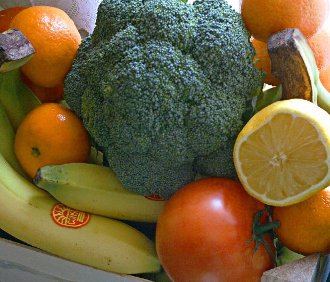Juicing Tips – Calcium Rich Juices

Juicing is one of the easiest ways of consuming vital nutrient and bio-active elements, including calcium. The advantages of juicing for calcium (chemical formula Ca) is that juices are mainly alkaline drinks as opposed to meats and dairy products which are abundant in calcium but create an acidic environment once taken in the body.
It is estimated that about 4 percent of the total mass of the human body consists of minerals. Out of all the minerals required for normal function of the human organism, calcium is at the very top of the human body’s mineral chart. The main function of calcium is to strengthen the bones and teeth, but this vital mineral is also needed for the proper function of the muscle and nerve tissue and to regulate the heartbeat. Calcium helps in the contraction motion of the muscles and aids the nerve signal transmission.
As we all probably know, the main sources of calcium are milk yogurt, cheese and the other diary products.
One of the less known but fantastic source of calcium is bone broth.
Other foods, such as green vegetables (especially cabbage, okra and broccoli, but NOT spinach or collard greens), soya, tofu, almonds, and some types of fish (especially, sardines, salmon and pilchards) are also good sources of calcium.
Table of Contents
- 1 Calcium and Osteoporosis
- 2 Useful Info Before Juicing
- 3 Calcium Rich Vegetables and Fruits
- 4 Other Bone Building and Strengthening Nutrients
- 5 Calcium Juice Recipes
- 6 Additional Ca-rich Drinks
- 7 Ca-rich Smoothies
- 8 Food For Thought
- 9 For All Those Who Are Allowed to Consume Diary Products
- 10 Related Posts
Calcium and Osteoporosis
Calcium is present in the blood, but its concentration does not depend on the amount of calcium assimilated on a daily basis. This is because the majority of calcium is stored in the bones which serve as a calcium reservoir, so that the body uses this bone calcium to maintain the needed blood levels.
The problem occurs when we do not assimilate enough calcium over a prolonged period of time – this weakens our bones and lowers our bone density. Ultimately this can lead to osteoporosis, a condition that affects about 20 to 30 percent of women over 60 years of age. The reason why this happens is simple. The female hormone estrogen is in charge of regulating the calcium absorption and desorption in the bones. Since post menopausal women have lower levels of estrogen, the likelihood of osteoporosis is higher.
 Without sufficient intake of calcium and phosphorus (bone-building nutrients) people could be more likely to develop osteoporosis. One of the ways to deal with this problem is to take medications, but unfortunately a lot of the osteoporosis medications have side effects. Even if you take calcium food supplements you might want to consult your physician about moving to natural calcium sources in view of the recent study conducted by German researchers linking calcium supplements intake and heart attacks.
Without sufficient intake of calcium and phosphorus (bone-building nutrients) people could be more likely to develop osteoporosis. One of the ways to deal with this problem is to take medications, but unfortunately a lot of the osteoporosis medications have side effects. Even if you take calcium food supplements you might want to consult your physician about moving to natural calcium sources in view of the recent study conducted by German researchers linking calcium supplements intake and heart attacks.
Useful Info Before Juicing
Freshly prepared calcium rich juices are great because for optimal calcium absorption it is important not to go over 500 mg of Ca on a per-sitting basis. The non-acidic environment of the vegetable and fruit juices is ideal to reduce the calcium excretion from the body, as opposed to the acidic nature of many Ca-rich diary products and meats.
There is one important thing we should pay attention to while juicing for calcium – oxalic acid present in some plants should be avoided as it reduces the calcium levels. Oxalic acid is found in collard greens, beets, rhubarb, sweet potatoes and spinach. As a rule, these vegetables are rich in calcium, but nevertheless should be avoided.
Additional foods that may interfere with calcium absorption are caffeine, too much protein, too much phosphorus and too much sodium.
Calcium Rich Vegetables and Fruits

The table below presents a list of fruits and vegetables abundant in calcium. The calcium levels are given in mg and most of them are normalized per 1 cup. Some values are given for cooked vegetables, but naturally, you would have to use the raw produce when preparing your juices. Please note that the recommended daily calcium intake for adults is between 1000 and 1300 mg, depending on person’s age and sex.
| Food | Serving | Calcium Quantity |
|---|---|---|
| sesame seeds unhulled | 1 cup | 1400 mg |
| Soybeans, green | 1 cup | 261 mg |
| Turnip greens | 1 cup | 249 mg |
| Cabbage, Chinese (pak-choi), cooked | 1 cup | 158 mg |
| Lettuce Iceberg, raw | 1 head | 102 mg |
| Okra, cooked | 1 cup | 101 mg |
| Kale, raw | 1 cup | 92 mg |
| Papaya, raw | 1 papaya | 73 mg |
| Onions, spring or scallions (includes tops and bulb), raw | 1 cup | 72 mg |
| Oranges, raw, all commercial varieties | 1 cup | 72 mg |
| Nuts, almonds | 1 oz (24 nuts) | 70 mg |
| Dates, domestic, natural and dry | 1 cup | 57 mg |
| Brussels sprouts, cooked | 1 cup | 56 mg |
| Figs, dried, uncooked | 2 figs | 55 mg |
| Lettuce, butterhead (includes boston and bibb types), raw | 1 head | 52 mg |
| Oranges, raw, all commercial varieties | 1 orange | 52 mg |
| Nuts, brazilnuts, dried | 1 oz (6-8 nuts) | 50 mg |
| Celery, raw | 1 cup | 48 mg |
| Blackberries, raw | 1 cup | 46 mg |
| Carrots raw | 1 cup | 42 mg |
| Broccoli, raw | 1 cup | 42 mg |
| Raspberries, raw | 1 cup | 27 mg |
| Cabbage, savoy, raw | 1 cup | 25 mg |
| Artichokes, raw | 1 cup | 21 mg |
| Apple | 1 apple | 11 mg |
| Tomatoes, raw | 1 cup | 9 mg |
Note: nutrient database source – USDA http://www.nal.usda.gov/
Other Bone Building and Strengthening Nutrients
In the following we present some additional nutrients and chemical elements that help in the bone building action of the body.
Magnesium promotes the transport of calcium from and to the bones and helps the bio-chemistry of calcium. Calcium, phosphorous and magnesium are very much related elements. Like calcium, the majority of magnesium in the body is stored in the bones. This nutrient is found mainly in leafy green vegetables, potatoes, nuts, seeds and whole grains.
Phosphorus promotes building of bones and other tissue growth. Phosphorus is found in diary products, meat and eggs, but there are also vegetable source, such as parsley, chives, potatoes, tomatoes and leeks.
Copper regulates some aspects of the bio-chemistry of the bones. Foods rich in copper are nuts, cocoa and whole grains.
Zinc is a chemical element that promotes the process of protein synthesis in the bones. Good sources of zinc are whole grains, beans, and nuts. Check this post for the full list of foods rich in zinc. If you take Ca supplements, the absorption of zinc in the body may be impaired.
Iron promotes bone strength. This nutrient is abundant in cruciferous vegetables, carrots, parsley, pineapple and blackberries.
Fluorides stimulate the growth of new bones and teeth. They are found in teas.
Silicon increases the strength of bones and teeth. Silicon can be found in cucumbers, asparagus, cabbage and dandelion greens.
Manganese promotes the building of cartilage and other types of connective tissues. This nutrient is found in pumpkin seeds, flax and sesame seeds, cruciferous vegetables, apples, pears, and oranges.
Potassium promotes the health of the bones by stabilizing the electrolytes in the body. Potassium vegetable and fruit sources are bananas, avocados, raisins, cocoa, dried apricots, cantaloupe, celery, carrots, potatoes, and tomatoes.
Calcium Juice Recipes
Citrus Blend
- 3 oranges
- 1 grapefruit
Apple Juice With Greens
- 1 apple
- 3 cups of kale
- 1 cup of celery
Apple With Greens – 2
- 1 apple
- 2 broccoli stalks
- 2 celery stalks
- 2 kale leaves
- 4 parsley sprigs
Additional Ca-rich Drinks
Here are some commercially available drinks which can serve as sources of calcium. The numbers given below are for the non-fortified variations. Naturally, the fortified drinks will contain up to 5 times more calcium.
Almond milk – contains 50 mg of Ca per 8-ounce serving.
Soya milk – contains 48 mg of Ca per 8-ounce serving.
Coconut milk – contains 40 mg of Ca per 8-ounce serving.
Rice milk – contains 22 mg of Ca per 8-ounce serving.
Ca-rich Smoothies
Blackberries Delight
- 1 cup of fresh or frozen Blackberries
- 1 table spoon natural flavoring (almond, vanilla, lemon)
- 1 table spoon vegetable gum – thickener (e.g. ground flax seed)
- 1 table spoon vegetable oil
Almond Smoothie
- 1 cup of almond milk
- 1 large banana
- a couple of ice cubes
The number of calcium abundant fresh juices and smoothies is limited only by your imagination. Don’t be afraid to experiment and try new recipes based on the list of calcium rich (non diary) foods we have provided you with in this article. Enjoy!
Food For Thought
Can you really provide enough Calcium for the proper functioning of your body using only non-diary foods? Let us know what your everyday experience is!
For All Those Who Are Allowed to Consume Diary Products
One cup of Kefir contains about 300 mg of calcium.
One cup of Yogurt contains about 450 mg of calcium.
One ounce of Mozzarella contains about 200 mg of calcium.
Babies and infants can readily absorb calcium from their mother’s milk. For adults the absorption of calcium from diary products is very individual. Since it is organic calcium, it does not build up on the walls of blood vessels and other tissue. If it is not absorbed, the excess of organic calcium is usually excreted with the urine and causes no harm.

Has anyone actually measured the amount of calcium in the juice of vegetables? How much of the calcium remains in the extracted cellulose after juicing?
Thanks for the comment. That’s a good point. One should always measure to know for sure. Otherwise, the content of nutrients is always a guess, however educated it may be. I have no idea if there are such measurements though.